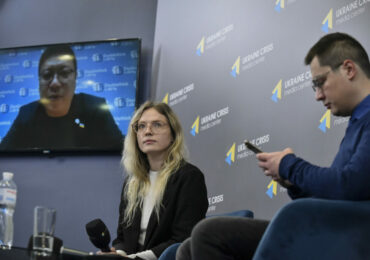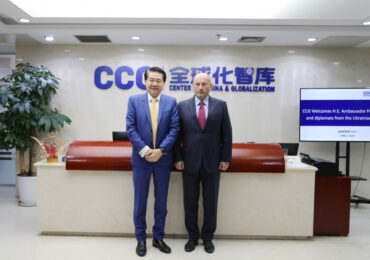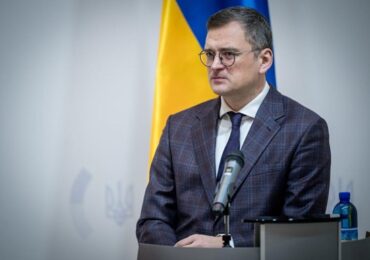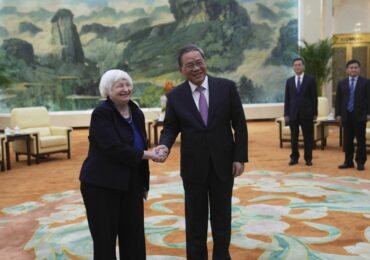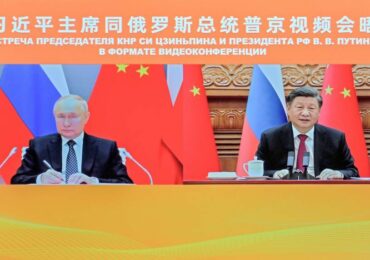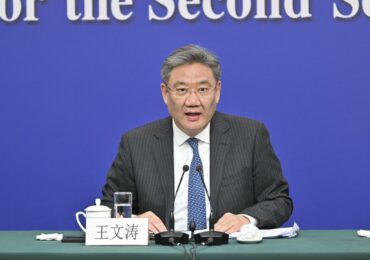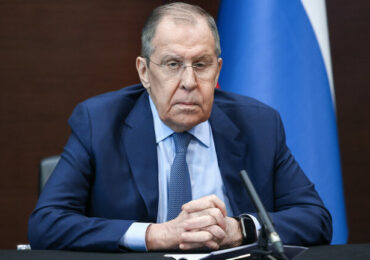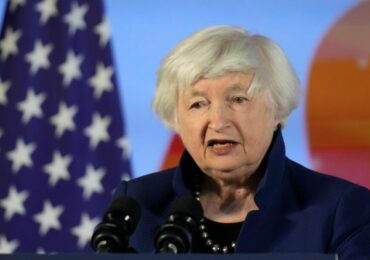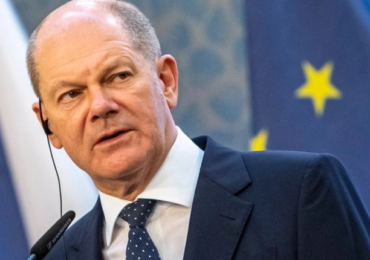Recent rapprochement between Ukraine and China has given rise to doubts about Kyiv’s geopolitical positioning, even as President Zelensky achieved his long-sought White House audience in early September.
However, Kyiv’s recent overtures to China should not be seen as a return to a multi-vector policy, a pivot to China, or even as using the ‘Chinese card’ as an attempt to attract Washington’s attention. Instead, these moves reflect Ukraine’s interest in pragmatic cooperation in select fields, while guarding riskier aspects away from Chinese engagement.
Ukrainian-Chinese “Rapprochement”
Observers of Ukrainian foreign policy would be remiss not to have noted the signs of improving ties between Kyiv and Beijing this year.
Perhaps most illustrative of the recent thaw was Kyiv’s retraction of its signature from a UN statement condemning China’s human rights violations in Xinjiang in June.Reports claimed that the about-face was a result of pressure from China, citing threats to cancel the previously planned delivery of 500,000 doses of the COVID-19 SinoVac vaccine. The Chinese MFA conversely welcomed Ukraine’s decision, stating it “reflects its spirit of independence and respect for facts.”
However, this was only one of the signals that made the Ukrainian media and expert community abuzz with discussions about the impending change in the country‘s China policy.
A few weeks later, Ukrainian President Volodymyr Zelensky held his first telephone conversation with Chinese leader Xi Jinping, in which he congratulated his counterpart on the 10th anniversary of strategic partnership. Zelensky expressed interest in developing trade and implementing major infrastructure projects, including in the development of seaports, construction and modernization of roads, railways, urban infrastructure and municipal services. According to Zelensky, Ukraine might become a “bridge to Europe” for Chinese business.
Soon after, the Ukrainian Ministry of Infrastructure announced it had signed an agreement with China on deepening cooperation in construction of infrastructure. The terms of the agreement provide financing on preferential terms and the construction of roads, bridges and airports by the Chinese side.
Hinting that there might be more to the recent ‘coziness’ between Ukraine and China, the launch of a Ukrainian-language version of Xi Jinping’s The Governance of China in Kyiv was attended by a number of prominent Ukrainian politicians. At the event, David Arahamia, head of the ruling Servant of the People party, told Chinese media that Ukraine intends to learn from the CCP in terms of managing the economy and government. He noted that the guiding principles of the CCP and his party “coincide in many ways.”
Finally, the speaker of the Ukrainian delegation in the Trilateral Contact Group, Oleksiy Arestovich, said that Ukraine “will reorient its interests to the East” if the “practice of surrendering Ukrainian interests” continues in the EU and the US.
He was, of course, referring to the recent decision of the US and Germany to continue Russia’s construction of Nord Stream 2, which Kyiv sees as a great threat to its interests.
“If the West wants to make friends with Russia at the cost of surrendering Ukrainian interests or a significant part of them, then we will turn to the East and thus rebalance our position,” Arestovich warned.
The Ukrainian Foreign Ministry quickly rebutted Arestovich’s statement, declaring that Ukraine has no intentions to reconsider its geopolitical orientation, which is undergirded by the goals of gaining membership in the EU and NATO. At the same time, the MFA said, “Ukraine will not artificially restrain the development of relations with certain countries or regions. The number one priority is national interest, no matter where in the world.”
A Second Look
In Ukraine, this succession of public moves by the Ukrainian government generated heated discussion.
While few believe there was a real strategic turnaround, some did begin to think Kyiv was trying to manipulate, or even blackmail, Washington by threatening to turn to China.
In truth, neither seems to be the case. Instead, Ukraine’s moves should be interpreted as an attempt to pursue a more pragmatic policy.
First, any attempts by Ukraine to use its leverage against Washington will lead nowhere, since Ukraine simply lacks the tools to put pressure on the US. The only critical issue from the US perspective as regards Ukraine was the Chinese attempted acquisition of the Ukrainian engine manufacturer Motor Sich. In the event of the transfer of the enterprise, China would get sensitive technologies for the production of aircraft engines, which could significantly strengthen China’s military position in the Asia-Pacific region.
However, the purchase would also cause colossal damage directly to the Ukrainian defense industry and jeopardize the implementation of a number of promising projects. Using it as a bargaining chip would thus hardly be a winning strategy.
Second, the potential for growth of Sino-Ukrainian economic relations is significantly limited. In recent years, China has become the number one partner for Ukraine in trade (trade turnover in 2020 reached its maximum – $15.4 billion), in which the share of Ukrainian exports is $7.1 billion (14.5 percent of total exports). Ukrainian exports are almost entirely raw materials – (iron ore 35 percent, grain 25 percent, oil and fats 15 percent, ferrous metals 9 percent), while Chinese imports are predominantly high-tech.
Beyond that, however, economic relations leave much to be desired.
A number of pilot projects for the establishment of joint Ukrainian-Chinese industrial parks and enterprises, both in Ukraine and in China, have not brought any results. The forecasts that after the signing of the Association Agreement between Ukraine and the EU, China would move production to Ukraine, bring new jobs and help Ukraine climb up the value ladder via more advanced manufacturing were not realized.
Meanwhile, the share of Chinese investment in Ukraine remains negligible. According to the State Statistics Service of Ukraine, direct investment in the Ukrainian economy from the PRC in 2015-2019 was only $127 million, bringing China’s share over this period to only 0.07 percent of all foreign investment in the country.
Based on the previous record, the likelihood of using China as a new engine for jumpstarting the Ukraine‘s economy is low. An increase in Ukrainian exports can be expected, but raw materials that are highly dependent on world prices will still dominate.
Thirdly, China’s limitations as a partner can be interpreted in the context of the recently adopted strategy for Ukraine’s foreign policy in which, despite the mention of China as a strategic partner, cooperation is focused only on the economic field and does not include any sensitive areas or security sphere. Interestingly, in the new National Security Strategy of Ukraine, adopted in 2020, China is not listed as a strategic partner, although it figured as one in bilateral documents in 2011 and 2013.
Thus, the Ukrainian leadership is trying to draw red lines in cooperation with China, and limit it to trade and investment issues, leaving strategic sectors of the economy, 5G networks, and critical infrastructure facilities closed to Chinese involvement. Foreign Minister Kuleba’s statements that “China is not an enemy, not a friend, but just a trading partner” confirm such a reading. Moreover, it is also reflected in Kyiv’s recent actions, including a bill on the screening of foreign investments and keeping Chinese companies away from strategic sectors in Ukraine.
Last, but not least, Ukraine has gradually begun to realize the risks associated with cooperation with China. Recently, criticism of Chinese foreign policy has increased significantly in the Ukrainian expert community and the media, largely due to the Motor Sich case. In addition, corruption practices of Chinese companies in the world, debt traps, vaccine diplomacy, and even Chinese disinformation about the alleged presence of US biolabs in Ukraine began to generate discussion in the country.
What China Wants
On the Chinese side, there has been a notable uptick in interest in Ukraine. In addition to the above actions, in June, Chinese Ambassador to Ukraine Fan Xianzhong announced China’s readiness to increase imports from Ukraine and participate in the construction of infrastructure within the framework of the ‘Big Construction’ project in Ukraine.
It is therefore eminently possible that China is changing its strategy towards Ukraine.
The Motor Sich case has become a good example for Beijing on how not to do it. In this case, China not only failed in its attempt to take over the enterprise, but also fomented a flurry of criticism from the Ukrainian side. Moreover, the acute political crisis in Belarus may force China to look for alternative land routes for the delivery of goods to the EU, and the growing strategic competition with the US makes Beijing look for new partners.
Ukraine could indeed be a valuable target for China, both from the point of view of expanding the market for Chinese goods, and with the aim of forming a loyal ally in the geopolitically crucial area. Here, it is likely that China’s traditional tools will be used – increasing trade links and financial and technological dependence. If China becomes a key trading partner, an uncontested supplier of equipment and technologies, or even vaccines, then Kyiv is less likely to criticize Beijing for its actions in the South China Sea, or human rights violations in Xinjiang.
However, ultimately, Ukraine is unlikely to change its strategic course and even form anything close to a multi-vector approach. The ability to achieve balance in its pragmatic policy will depend on Kyiv’s clear understanding of both the opportunities and risks of cooperation with China, as well as the willingness of Western partners to offer an acceptable alternative to Chinese “carrots”. So far, the Western offer has left quite a lot to be desired.
Юрий Пойта, руководитель секции Азиатско-Тихоокеанского региона New Geopolitics Research Network.
Подписывайтесь на наш телеграм-канал. Инсайды о Китае — без лицемерия и пропаганды.



